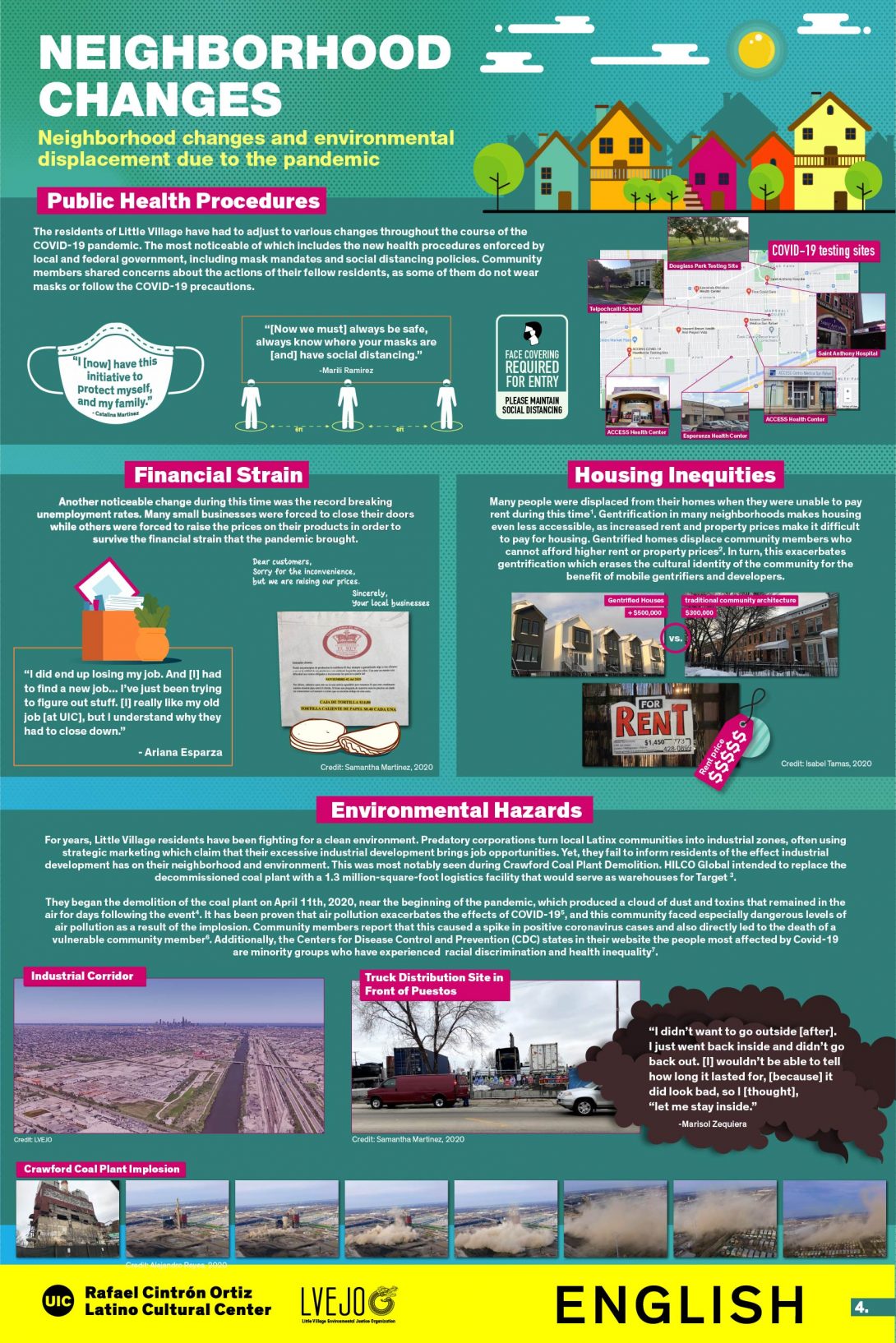Neighborhood Changes
Neighborhood changes and environmental displacement due to the pandemic
Neighborhood Changes Heading link

Public Health Procedures
The residents of Little Village have had to adjust to various changes throughout the course of the COVID-19 pandemic. The most noticeable of which includes the new health procedures enforced by local and federal government, including mask mandates and social distancing policies. Community members shared concerns about the actions of their fellow residents, as some of them do not wear masks or follow the COVID-19 precautions.
“I [now] have this intiative to protect myself, and my family.” – Catalina Martinez
“[Now we must] always be safe, always you know where you masks are [and] have social distancing.” – Marili Ramirez
Financial Strain
Another noticeable change during this time was the record breaking unemployment rates. Many small businesses were forced to close their doors while others were forced to raise the prices on their products in order to survive the financial strain that the pandemic brought.
“I did end up losing my job. And [I] had to find a new job… I’ve just been trying to figure out stuff. [I] really like my old job [at UIC], but I understand why they had to close down.” – Ariana Esparza
Housing Inequities
Many people were displaced from their homes when they were unable to pay rent during this time1. Gentrification in many neighborhoods makes housing even less accessible, as increased rent and property prices make it difficult to pay for housing. Gentrified homes displace community members who cannot afford higher rent or property prices. In turn, this exacerbates gentrification which erases the cultural identity of the community for the benefit of mobile gentrifiers and developers.
Gentrified Houses: +$500,000 vs. Traditional Community Architecture: +$300,000
Environmental Hazards
For years, Little Village residents have been fighting for a clean environment. Predatory corporations turn local Latinx communities into industrial zones, often using strategic marketing which claim that their excessive industrial development brings job opportunities. Yet, they fail to inform residents of the effect industrial development has on their neighborhood and environment. This was most notably seen during Crawford Coal Plant Demolition. HILCO Global intended to replace the decommissioned coal plant with a 1.3 million-square-foot logistics facility that would serve as warehouses for Target.
They began the demolition of the coal plant on April 11th, 2020, near the beginning of the pandemic, which produced a cloud of dust and toxins that remained in the air for days following the event. It has been proven that air pollution exacerbates the effects of COVID-19, and this community faced especially dangerous levels of air pollution as a result of the implosion. Community members report that this caused a spike in positive coronavirus cases and also directly led to the death of a vulnerable community member6. Additionally, the Centers for Disease Control and Prevention (CDC) states in their website the people most affected by Covid-19 are minority groups who have experienced racial discrimination and health inequality.
“I didn’t want to go outside [after]. I just went back inside and didn’t go back out. [I] wouldn’t be able to tell how long it lasted for, [because] it did look bad, so I [thought], “let me stay inside.” -Marisol Zequiera